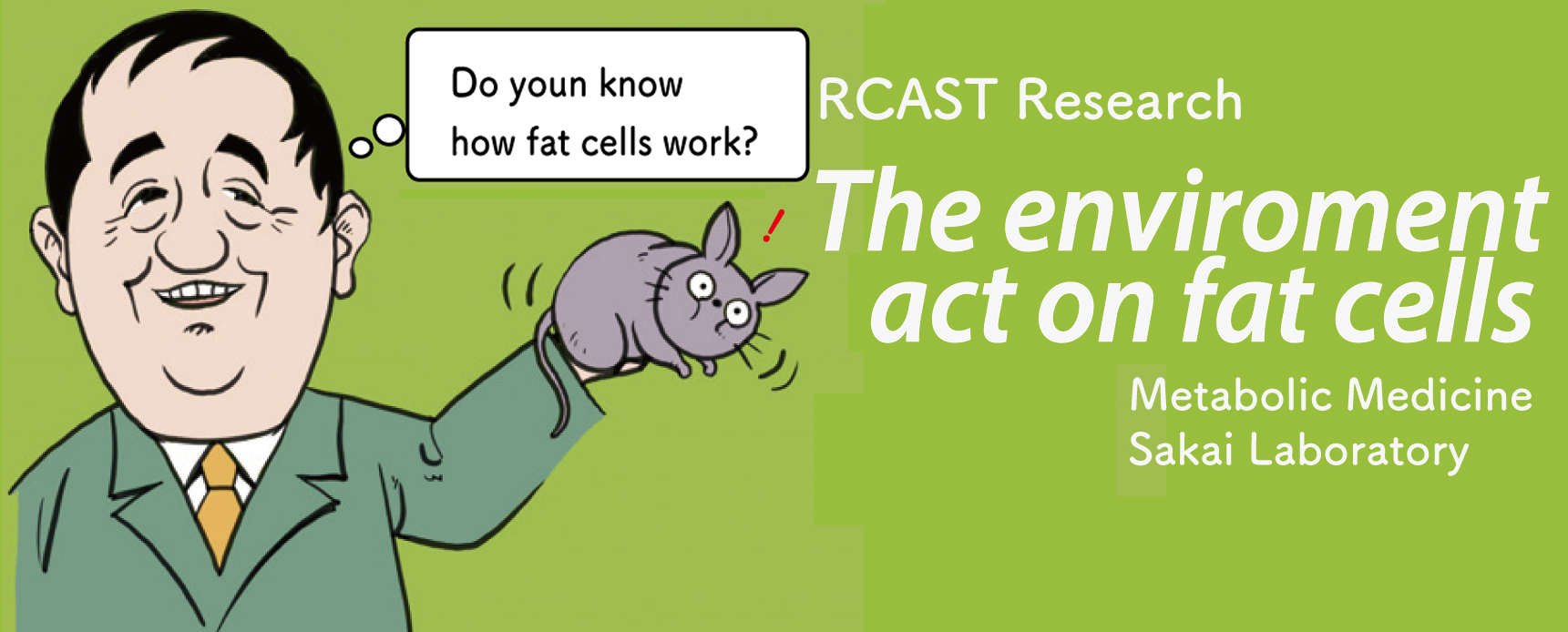Research Project
Epigenetics, from the Greek "epi," means "on," DNA. All of our tissues contain the same 30,000 genes; however, in a given tissue and at a given stage, owing to an "epigenetic code," only a few of these genes are expressed, giving rise to the "phenotype." Disruption of the balance of epigenetic networks may cause several major diseases, including cancer, syndromes involving chromosomal instabilities, and mental retardation. However, the relevance of epigenetics to other physiopathological mechanisms in common diseases, such as metabolic syndrome, was less clear.
The Sakai laboratory is now focusing on solving the physiopathological mechanisms in metabolic syndrome by studying the epigenetic network. We studied PPAR gamma that is regulated by thiazolidinediones, a new class of anti-diabetes drugs. PPAR gamma is a determinant of adipocyte (fat cell) differentiation, and thus represents a potential clue to the link between obesity and diabetes. Through genome wide identification of PPAR gamma targets by chromatin immunoprecipitation on Chip (ChIP-Chip) analysis, we identified several histone modification enzymes (HKMTs) and candidates genes as new PPARg targets.
We show that these HKMTs and their candidates function either anti-, or pro- adipogenic factor and coordinately regulated their gene expressions by PPAR gamma to promote adipogenesis. We therefore propose the novel action of PPAR gamma: controlling epigenomic status in fat cell differentiation. Furthermore, using gene knock out technology, we revealed that histone H3 lysine 9 demethylation tightly links to obesity, dyslipidemia, and insulin resistance.
Our current research focuses on studying the link between energy imbalance and incorrect "epigenetic programming" in the development of obesity because of inadequate maternal nutrition and/or metabolic disturbances. We are also biochemically characterizing HKMT candidates involved in adipogenesis as well as osteogenesis. We are also challenging the drug design for histone modification enzymes by means of molecular dynamics.
Recent publications
- Abe Y1, Rozqie R1, Matsumura Y, Kawamura T, Nakaki R, Tsurutani Y, Tanimura-Inagaki K, Shiono A, Magoori K, Nakamura K, Ogi S, Kajimura S, Kimura H, Tanaka T, Fukami K, Osborne TF, Kodama T, Aburatani H, Inagaki* T, Sakai* J. JMJD1A is a signal-sensing scaffold that regulates acute chromatin dynamics via SWI/SNF association for thermogenesis. (1 equal contribution, * corresponding authors)
"JMJD1A is a signal-sensing scaffold that regulates acute chromatin dynamics via SWI/SNF association for thermogenesis"
Nature Comm. 6:7052, 2015 [DOI] [PubMed]

